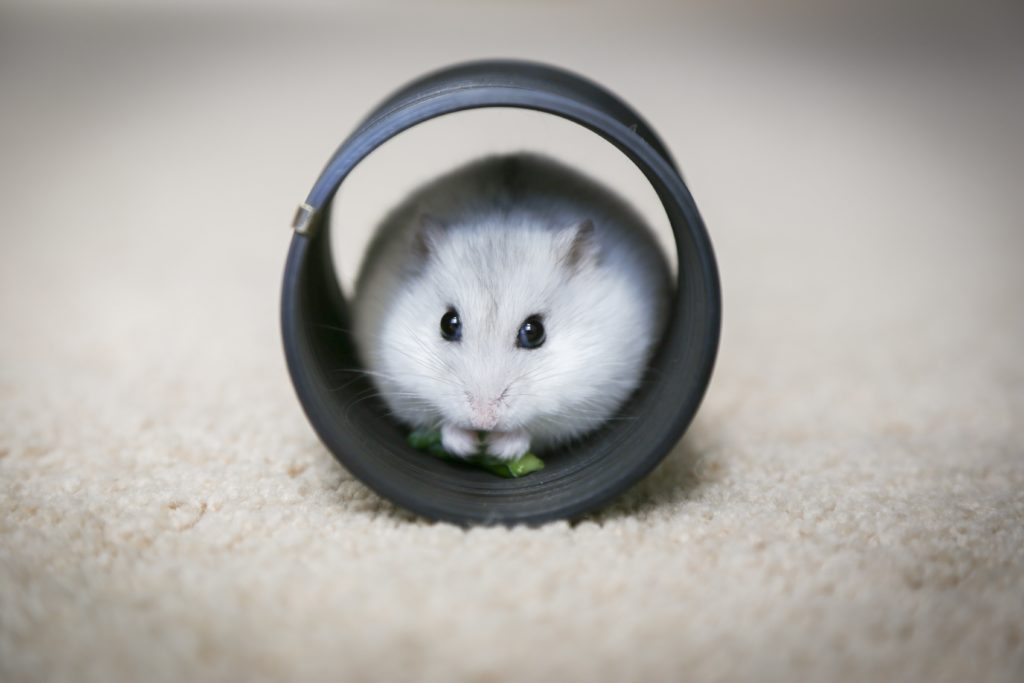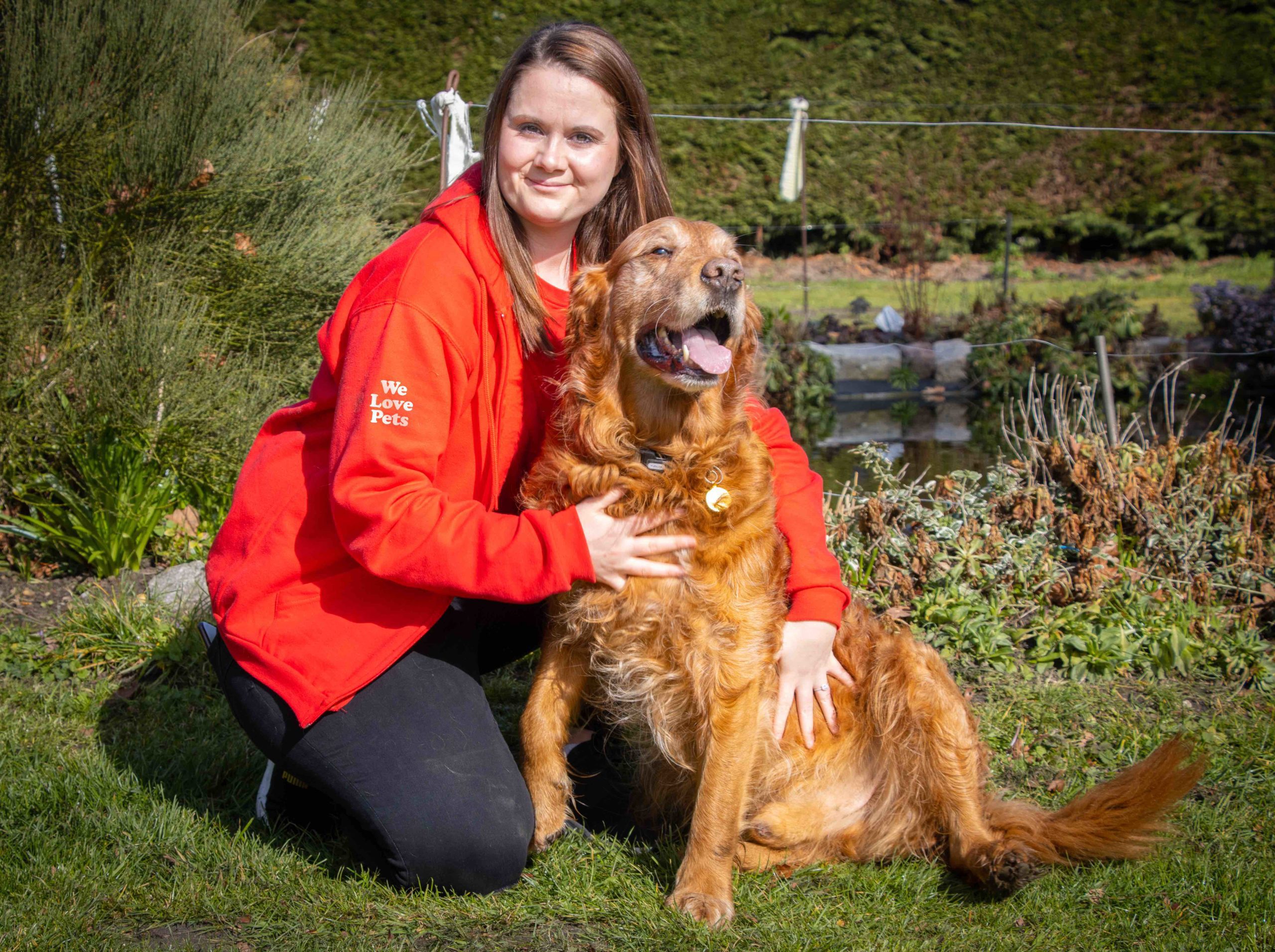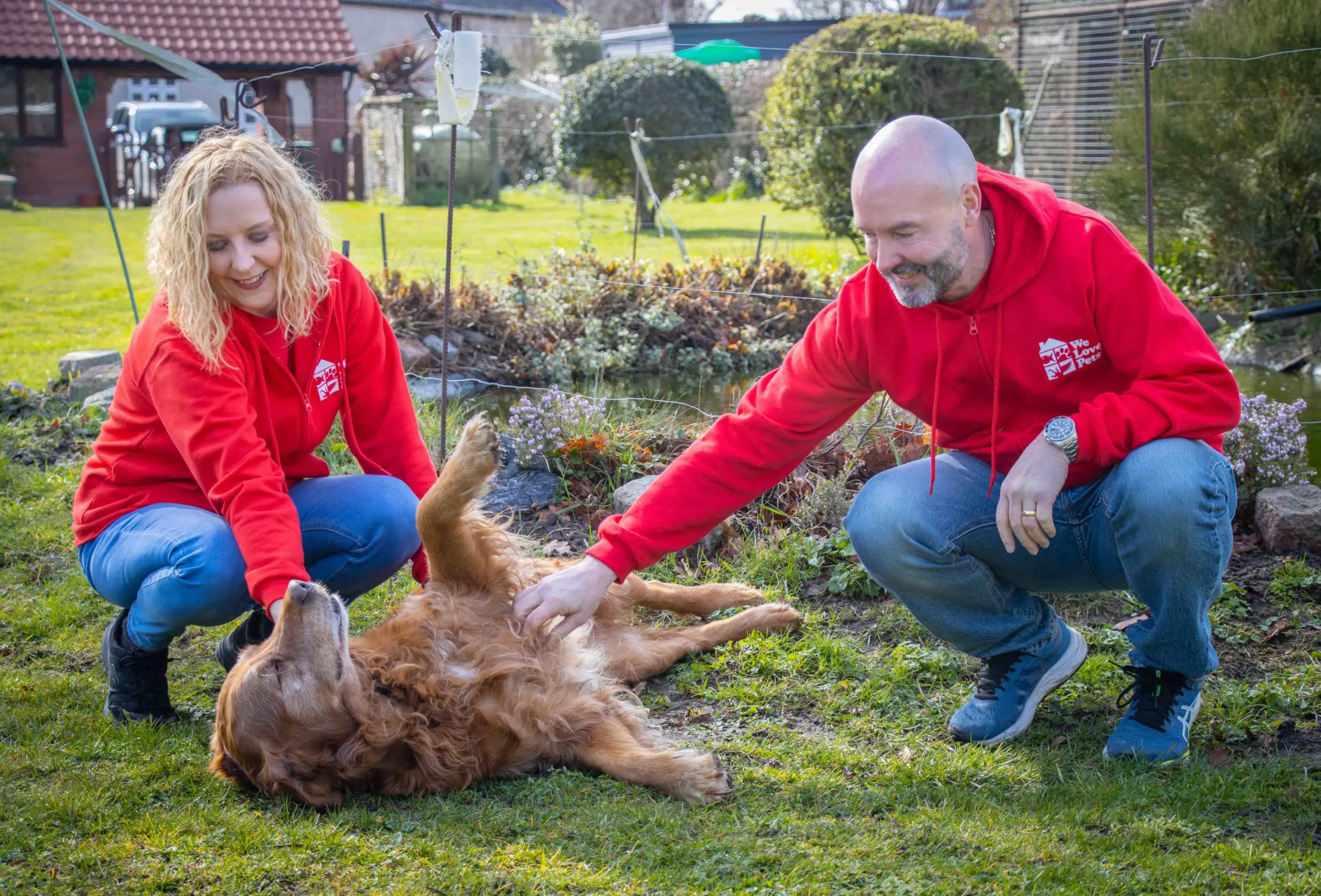Do you find your hamster escaping and causing mischief?
Hamsters are incredibly intelligent, and they need lots of mental stimulation in order to be happy and settled. Since they are so clever, they need lots of fun things to entertain themselves with. A wheel in their cage simply isn’t enough for them, and they need so much more to get up to, like toys or chews. You can find all sorts of things to make their space a bit more enriching, and there is plenty for them to get up to outside of their cage too! Toys, puzzles, interaction- it’s all necessary for your hamster to be really happy in life, and it won’t always be too difficult to achieve.
Luckily, there is plenty available to make your hamster’s life a little more interesting, whether it be complicated hideouts with lots of platforms and ramps to run around or simply a snuggly area to burrow down in. You can also make fun things for them from items you have at home, like tunnels and mazes made from cardboard. There is plenty for your hamster to get up to no matter your budget, and they will be thankful for the stimulation.
Having Fun in Their Home!
Hamsters are nocturnal, so it’s essential that there is plenty in their cage for them to get up to while you are asleep and unable to entertain them or interact with them. In the wild, a hamster would get up to so much in their homes: burrowing and chewing, hiding and running around is all natural behaviour for hamsters. Making sure their domestic lives give them the opportunity to dive headfirst into their natural instincts will keep them happy and satisfied.
- Make sure there’s at least 5cm of bedding in your hamster’s cage so that they have space to dig, burrow and build nests like they do in the wild. Choose a speciality hamster bedding that doesn’t have pine or cedar shavings. 5cm is only a minimum; you can add more to make more digging space for your hamster. Make sure the bottom of the cage is solid so that when they burrow, they don’t get caught and injured on the metal bars of a simple cage.
- Lots of chew things for your hamster to have a nibble on will give them something to get up to. They love to chew on different materials, and it actually keeps them quite entertained! Changing up the chews in their cage every time you clean it out will keep them interested. Coconut shells, hay cubes, seagrass, and untreated softwood are all great for keeping them entertained. They have the added benefit that they will help wear down their continuously growing teeth.
- A simple cardboard tube in their cage creates a fun little tunnel that your hamster can hide in and explore through. Reuse toilet roll and kitchen roll tubes in their cages for a cheap hideout and play toy. Plain, non-glossy cardboard tubes are also good for chewing on, which can be beneficial for their teeth. If your hamster is too large to fit through a cardboard tube like this, you can cut them in half and use two to make a slightly larger tunnel, or your local pet shop might sell thicker, sturdier cardboard tunnels that are a little bit bigger than a toilet roll tube.
- Wheels can be put in your hamster’s cage so that they can exercise. A plastic wheel is safer than a metal wheel as they don’t usually have rungs that your hamster’s foot might fall through and injure themselves. When it comes to hamster wheels, you should make sure they are the right size, smaller hamsters will do better with 17cm wheels, and bigger ones should have 20cm wheels. They should be big enough that your hamster can run with their backs straight and level, not in a U-shape.
- You can hide hamster pellets in their cages so they can forage around for some yummy snacks. Put some in their food dish, then hide the rest in the cage, in toys, under bedding- anywhere that can encourage them to forage. Make sure you feed your hamster well-balanced and nutritionally complete pellets. As the occasional special treats, you can give your hamster seeds, small pieces of fruit and vegetables, and a bit of plain cooked pasta. Foraging is completely normal hamster behaviour, and it helps to improve boredom and aggression.
- You can purchase a wide variety of different toys to put in their cage for your hamster to play with that will both entertain them and be mentally stimulating. Online, you can even find hamster toys that will be amusing for your hamster (and you might find them funny too), mazes, platforms, and even hideouts that look like fast-food restaurants and buildings! There’s so much your hamster can get up to with different toys, and you can mix them up and rotate the toys around when you clean their cage. Try to choose natural and dye-free toys that won’t cause problems for your hamster should they nibble on them.
Having Fun Outside of Their Cage!
While hamsters are nocturnal, it’s important that the times during which your waking schedules overlap, you and your hamster have lots of time for bonding and further exercise. While you’re awake, let them out of their cages to explore and have even more fun so they don’t get bored of their cages. You can have lots of fun in your house with your hamster, and making and setting up puzzles and mazes for them to get up to will be a fun rainy-day activity for you too!
- Hamsters can being held, and it can help build a bond between you and your tiny furry friend. You can bring them out of their cage and hold them in your hands, letting them smell you and crawl over your hands to explore. All the new smells and sights will be entertaining for them as well as you watching them! Hamsters can remember you by scent and sound, so spending time with them will help you gain their trust while also being super entertaining for them. Some hamsters have a fun time sitting in their humans’ pockets or hoods, and they like to burrow down and get comfy while you get on with your day; just make sure they are out and safe before taking clothes off or going outside!
- Create or buy a maze or obstacle course for your hamster to explore. You can use plastic blocks, boxes, toilet paper rolls, or anything solid and stable that can be used to make a maze for your hamster to run through. You can map out the maze design first on a piece of cardboard and use non-toxic glue to attach the walls to the base. You can dot treats around the maze to encourage your hamster to explore it or even set up a pile of goodies at the end of the maze as a prize for completing it.
- The typical image of a pet hamster is one having a run around the room in a ball, and they are great for getting in a bit of exercise (but lowering the risk of being stepped on because they weren’t spotted), and hamster balls can also be mentally stimulating for them. Make sure they’re only in them for 10-15 minutes, though, so they don’t get tired out and exhausted. Just make sure to keep an eye on them in the ball. You should also be aware of the ground that they are running on. You might not pay mind to the pointed edges of the hearth or a step between doorways, but if your hamster runs into it or falls off a step, they could hurt themselves or simply break out of the ball and get lost.
- You can set up a playpen away from other animals that allows your hamster to explore a new environment and move around a little bit further than just being in their cage. You can buy special rodent fencing/ playpens and set one up in a flat area away from other animals and vehicles so that they can play in peace. Just make sure you keep an eye on it at all times, especially if it’s outside.
- You can teach hamsters new tricks! They are smart and curious, and they love to learn new things. Teach them to stand on their hind legs simply by holding a treat above them and saying “Stand” nice and clearly. Give them a treat every time they follow the command, but make sure that training time stays short, so they don’t get bored. Repetition and practice will get your hamster doing all sorts of tricks!
Whether they are having fun in or outside their cage, it’s important to be careful of what they play with and keep an eye on what they’re up to. Hamsters are small and fragile, and if their explorations get a little too enthusiastic, they can seriously hurt themselves. Whenever they are outside of their cage, make sure that any other pet won’t harm them and that they are in a safe area, and if they do seem to injure themselves, contact your vet for advice or examination.




